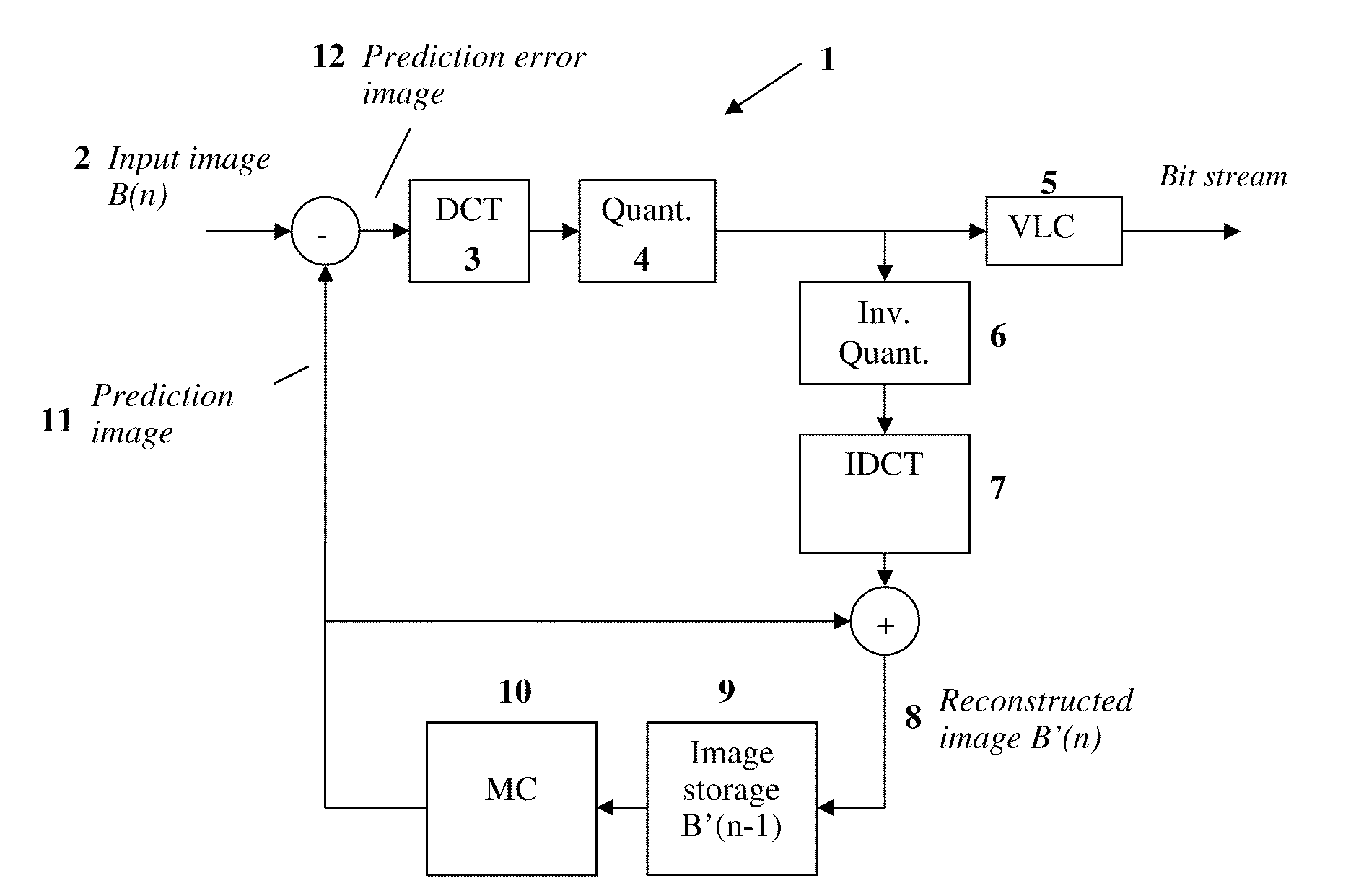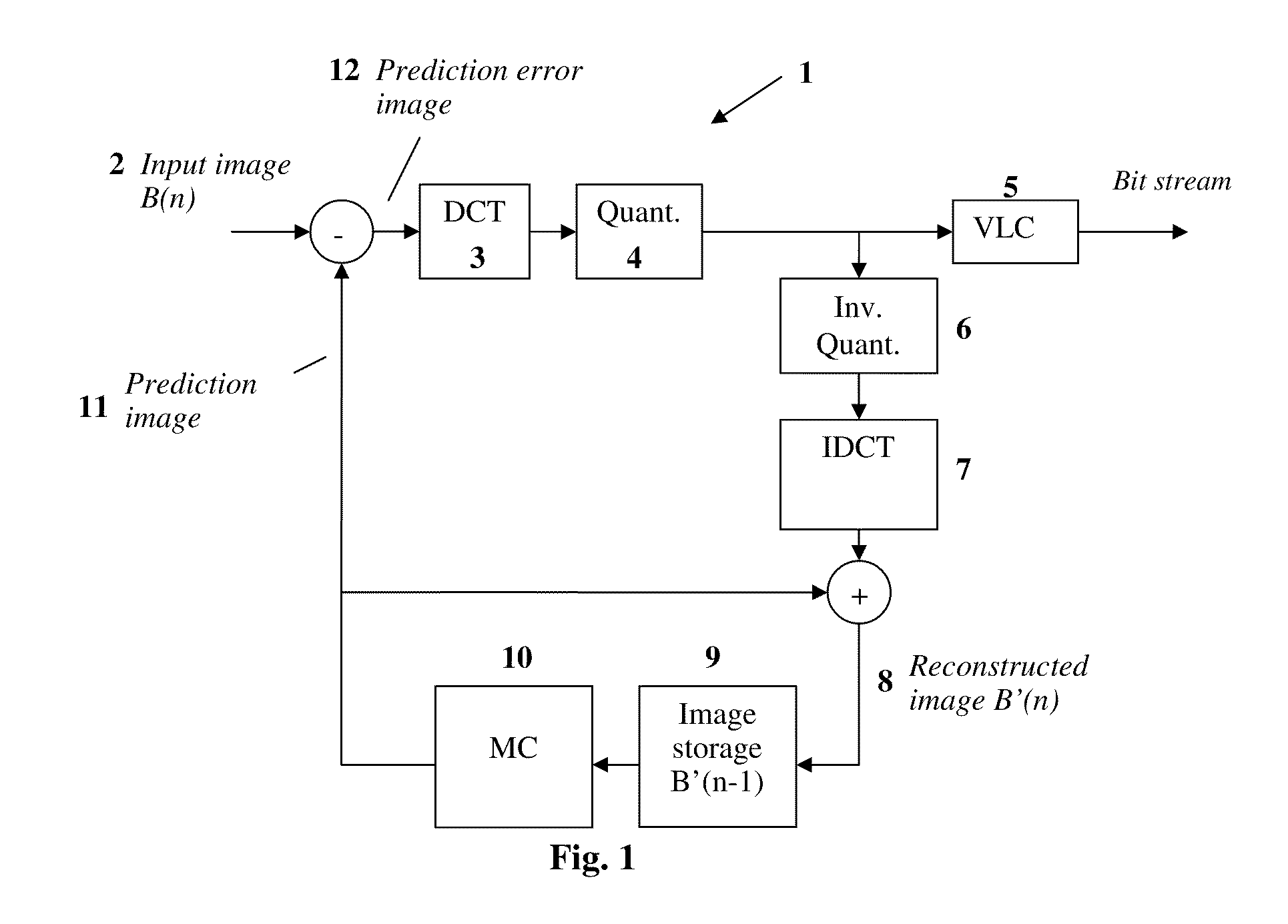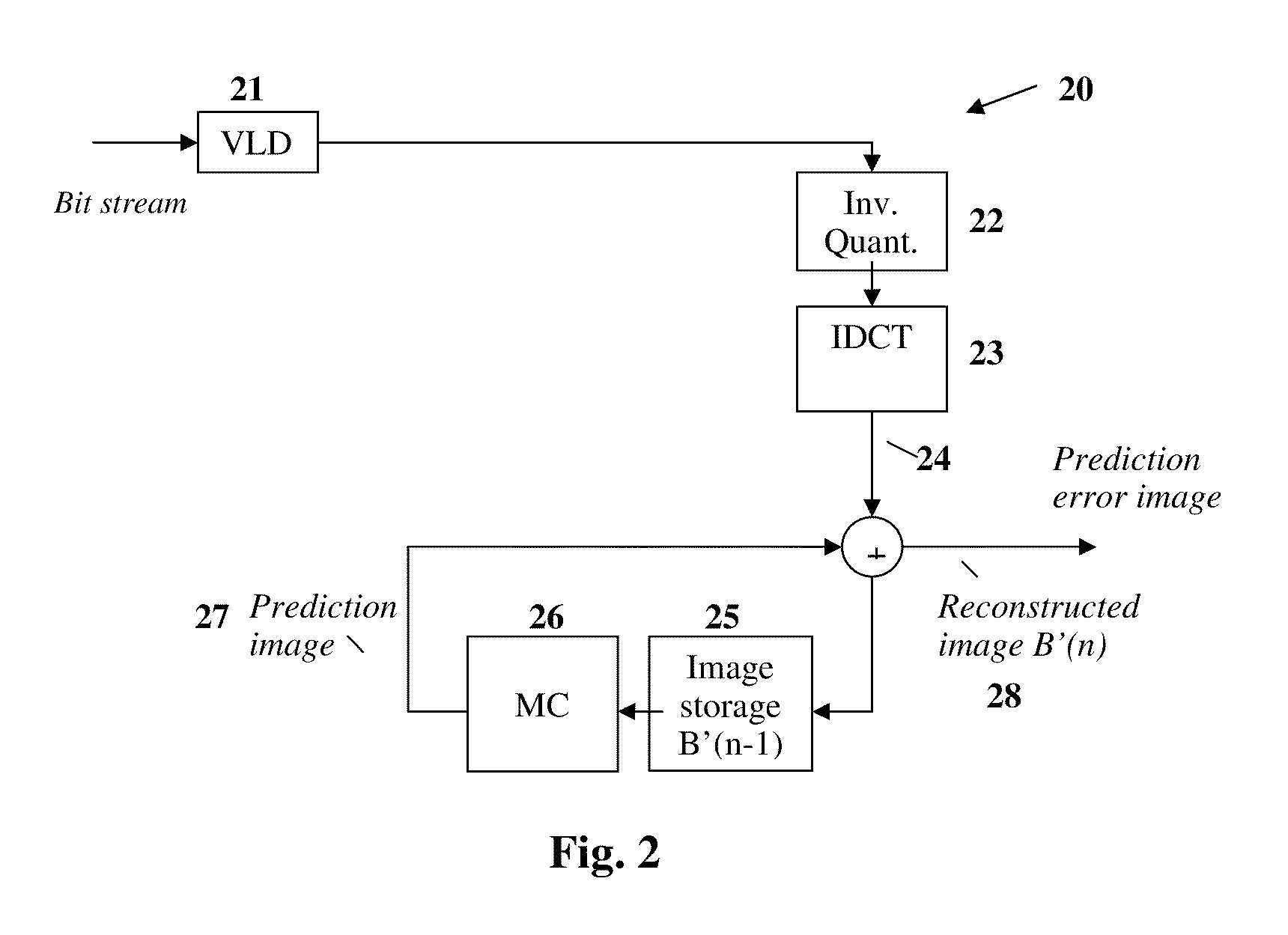Method and device for avoiding rounding errors after performing an inverse discrete orthogonal transformation
a discrete orthogonal and transformation method technology, applied in the field of avoiding rounding errors after performing an inverse discrete orthogonal transformation, to achieve the effect of avoiding rounding errors
- Summary
- Abstract
- Description
- Claims
- Application Information
AI Technical Summary
Benefits of technology
Problems solved by technology
Method used
Image
Examples
Embodiment Construction
[0058]FIG. 1 schematically shows the structure of a typical video encoder 1. One possibility for encoding video images is e.g. an encoding according to MPEG. For illustrative purposes, the following description is given in the framework of video encoding according to MPEG without limiting the range of applications of the present inventions to such a coding. The MEPG-2-standard provides three different types of images for the coding, namely I, P and B images. I images are encoded independent from the other images; they are submitted to a so called intra-coding. P images are predicated from a preceding I image or P image; they thus depend on an I image or P image which precedes in time. B images can depend on a preceding and / or a subsequent I or P image.
[0059]If a video encoder 1 as it is illustrated in FIG. 1 is used for such an MPEG coding of e.g. P images, not the input image, but a prediction error image 12 is encoded and transmitted. From an already transmitted image within an im...
PUM
 Login to View More
Login to View More Abstract
Description
Claims
Application Information
 Login to View More
Login to View More - R&D
- Intellectual Property
- Life Sciences
- Materials
- Tech Scout
- Unparalleled Data Quality
- Higher Quality Content
- 60% Fewer Hallucinations
Browse by: Latest US Patents, China's latest patents, Technical Efficacy Thesaurus, Application Domain, Technology Topic, Popular Technical Reports.
© 2025 PatSnap. All rights reserved.Legal|Privacy policy|Modern Slavery Act Transparency Statement|Sitemap|About US| Contact US: help@patsnap.com



